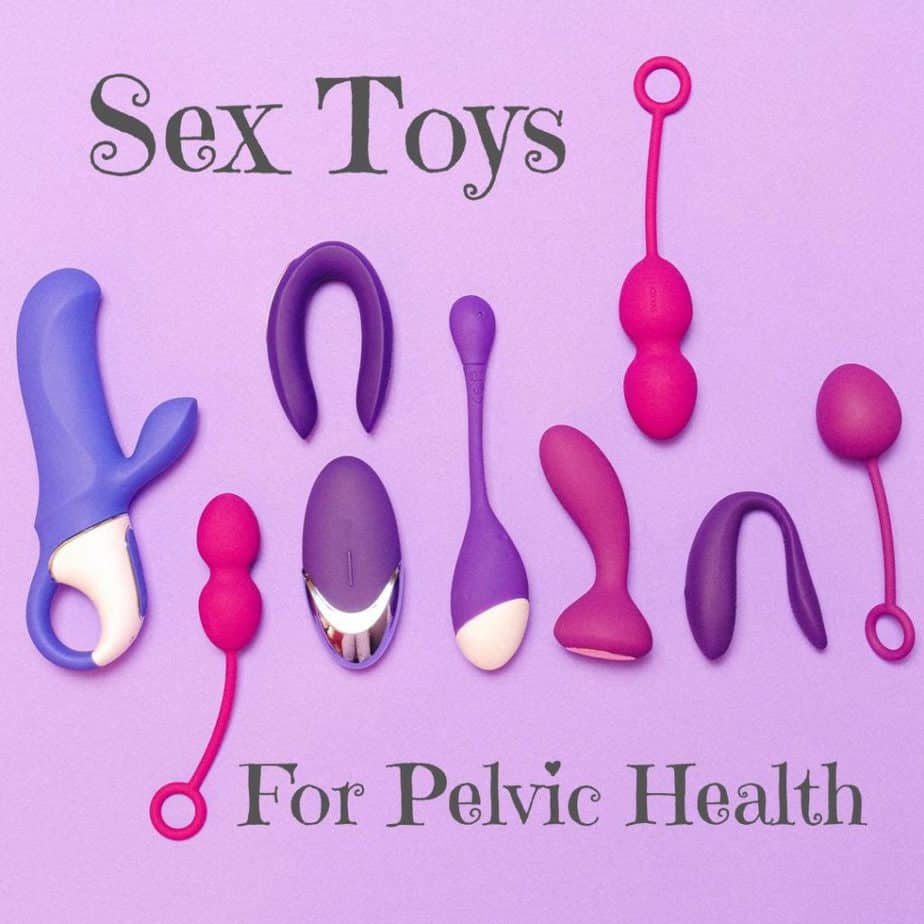
Tis’ the season for giving, so why not give yourself the gift of self-pleasure?
The world of sex toys can seem overwhelming. This is especially true for women who suffer from pelvic floor dysfunction, which can make vaginal penetration extremely painful.
It is important to note that everyone has a pelvic floor. Therefore, anyone can experience pelvic pain or sexual dysfunction: cis, trans, non-binary, and gender nonconfirming folx. Sexual health is a fundamental human right.
As a pelvic health therapist, I am often asked if someone with pelvic floor dysfunction can safely use sex toys without worsening their symptoms. That answer depends on a variety of factors, but most of the time, my answer is an enthusiastic YES.
Sexual Dysfunction
Pelvic floor dysfunction (PFD), for example pelvic muscles that are too tight or too weak, can severely impact sexual wellness and function. PFD can manifest as clitoral, vaginal, perineal, or anal pain; diminished, absent, or painful orgasm; low arousal or sex drive; or painful intercourse. A pelvic health physical therapist can screen for PFD, discuss sexual ergonomics such as positioning, and can provide information and education about sexual health.
Anyone experiencing the following PFD symptoms should be assessed and treated by a pelvic health specialist:
- urinary urgency/frequency
- difficulty starting the urine stream
- difficulty evacuating bowels
- painful sex
Rewiring The Brain
Chronic pain rewires our brain to anticipate more pain. Consequently, we can become hyperreactive to our environment or experiences even when there isn’t an immediate threat of harm. This applies to sexual experiences, as one negative sexual encounter can prime our bodies to anticipate and associate sex with harm. The same can be true with the presence of pelvic pain.
We can start to change the narrative and condition ourselves to experience pleasure when we treat pelvic pain holistically. It is imperative to address the psychological and emotional components that feed into our belief systems, shaping our sex lives and how we experience pleasure. Just as a pelvic health therapist can assess and treat the root causes of pelvic pain, a psychotherapist or sex therapist can provide invaluable assistance to create new patterns.
Generally speaking, once clients have made progress addressing their pelvic symptoms, they can get a green light to progress onto sexual activity. Sex toys are a great way to facilitate non-threatening pleasurable experiences. The possibilities are endless when it comes to toys that enhance pleasure and create positive associations with your pelvis. The goal is to rewire your brain to anticipate pleasure.
Sex Toys 101
Sex toys come in variety shapes, sizes, textures, and materials. A dildo, which may or may not vibrate, is designed for penetration either vaginally or rectally during masturbation or with a partner.
Here are a few things to ponder when choosing a sex toy:
Style, shape, or size: Toys can be designed for external stimulation, internal penetration, or both. Consider something that has a good aesthetic feel, as you want to create a positive connection to the experience. If you have been using dilators, something of a similar size may feel best.
Vibration: It is important to note that vibrating toys are not for everyone. Vibration may cause irritation to nerves or pelvic floor muscles for some. However, it may help ease muscle tension and promote blood flow for others. Many devices include high-tech options that allow you to change the intensity or pattern of vibration.
Material: Common sex toy materials include glass, plastic, silicone, and metal. Certain materials are more porous than others, making it easier for bacteria to thrive. Some materials may contain chemicals that can lead to skin irritation. Look for something made with high quality materials like medical-grade silicone.
Lube: Lubrication cuts down on friction to help reduce skin abrasion and dryness. This can help ease pain and muscle tension, avoiding irritation to sensitive skin. Look for water-based or plant-oil-based lubricants to avoid unnecessary or harmful chemicals. There is not a single perfect lubricant that meets everyone’s needs. Choose the personal lubricant that works best for you.
Good hygiene: Always clean and store toys correctly. Typically, hot water and gentle antibacterial soap will do the trick.
Still unsure if a toy is right for you or where to start? Here are some great resources to get you started:
Pelvic Floor Therapy
Pelvic health physical therapists can screen for orthopaedic dysfunction in the spine, hips. or pelvis. They can discuss sexual ergonomics such as positioning, the use of lubricant, and healthy sexual habits. A growing body of evidence demonstrates the efficacy of skilled pelvic interventions in the management of pelvic floor dysfunction, sexual health issues, and pelvic pain.
We Can Help!
Body Harmony Physical Therapy offers one-on-one treatment sessions and provides individualized treatment programs for each patient. Please contact us at 212-233-9494 or email frontdesk@bodyharmonypt.com for Telehealth appointments or for more information about how physical therapy can help you.
This blog was created for informational purposes only and is not intended to be a substitute for professional medical advice, diagnosis, or treatment. Always seek the advice of your physician or other qualified health provider with any questions you may have regarding a health condition or before beginning a new exercise routine.
Written By: Victoria Garrett, PT, DPT

